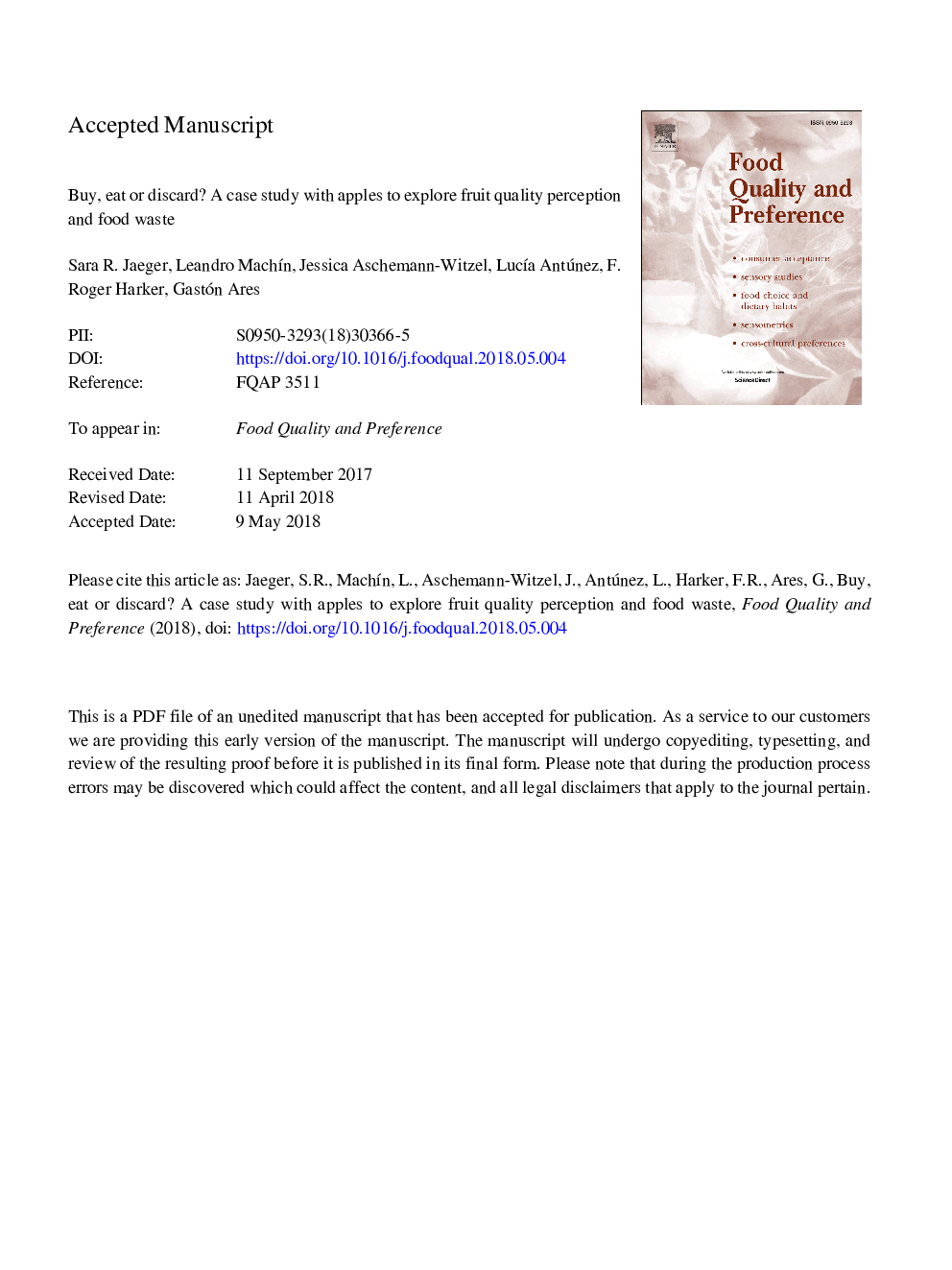| Article ID | Journal | Published Year | Pages | File Type |
|---|---|---|---|---|
| 8838413 | Food Quality and Preference | 2018 | 41 Pages |
Abstract
Consumers' perceptions of the quality of fresh produce at the point of purchase and point of consumption play an important role in decisions about what to buy, eat and discard. Apple images were used to assess the extent that defects (bruising, splitting, and crushing) attracted consumers' visual attention as measured using eye tracking and related to choices to buy and to eat the apples. For an internal defect (internal browning and cavities) that is usually only evident after biting into the apples, images were used to determine whether consumers would discard a portion or all of the apple and to assess their perceived quality and sensory expectations using a RATA question. Eye-tracking demonstrated that damage to the exterior of apples and internal browning rapidly attracted consumers' visual attention. Choice of apples with external defects at both point-of-purchase and point-of-consumption was low and ranging from 0% to 7% and 3.4 to 15.1%, respectively. Consumer decisions to discard apples with internal browning was nuanced in that (1) small amounts of browning did not lead to disposal, (2) when the relative area of browning reached 8.2% then 50% of consumers would throw away a portion of each apple, and (3) when browning was more severe (34.6% relative area) then 50% of the consumers indicated that they would throw away the whole apple. The presence of internal browning lowered consumers' perceived quality and sensory expectations, as evidenced by the increase in RATA ratings of negative terms (e.g., disgusting, rotten, bruised, mealy) and the lowered RATA ratings for the terms natural and healthy. From a perspective of reducing food waste, the results stress that strategies are needed to increase value perception of defective fruits to increase likely purchase and consumption.
Related Topics
Life Sciences
Agricultural and Biological Sciences
Food Science
Authors
Sara R. Jaeger, Leandro MachÃn, Jessica Aschemann-Witzel, LucÃa Antúnez, F. Roger Harker, Gastón Ares,
